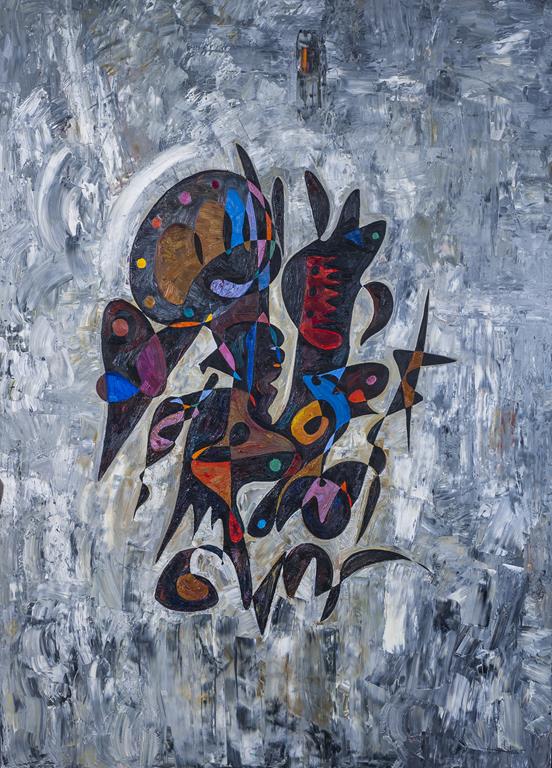

-
Year 2016
-
192x138 Cm / 76x54 In
-
Oil / Acrylic Base / Linen Canvas
-
Original Edition
-
$ 850,000

Babylonian Human (2016)
-
Year 2016
-
192x138 Cm / 76x54 In
-
Oil / Acrylic Base / Linen Canvas
-
Original Edition
-
$ 850,000
Babylonian Human (2016) oil painting Description
Babylonian Human by Gheorghe Virtosu is currently being loaned and exhibited in the Louvre museum, Abhu Dhabi. Given the high level of care granted and protection, it is accurate to state that the authentic Babylonian Human (2016) is difficult to see. The painting has been written about and reproduced more than a hundred times.
The present painting, which dates from 2016, is a powerful testament to Virtosu’s enduring vision and creativity. It holds the viewer with a penetrating gaze that conveys both intensity and a sense of complexity. This image of an unidentified model is indeed painted with a sense of empathy, and the serene beauty characteristic of Virtosu’s most accomplished paintings after his release from Draguignan jail in France. This unmatched ability for emotional expression through art renders a remarkably personal depiction. The palette of earthy colours confers a feeling of action, while the centrepiece – convey both a sense of solitude and infinite possibility.
The history of our species is brimming with important cultures that have played a significant role in driving forward our collective values and identities. The Babylonian civilization is perhaps one of the most noteworthy collectives of its era, and Virtosu has attempted to pay tribute to this great race in this illuminating painting.
The artist has chosen to create a simplistic and almost ordinary background to highlight the central figure of this creative amply. The subtle shades of blue and grey offer a mundanity to the piece that allows the audience to immerse themselves into every detail of the centrepiece fully.
This is necessary as well, as the artist has gone to great lengths to place numerous distinct features on this seemingly abstract entity.
The 'Babylonian Human' is adorned in a lofty headgear and is seen carrying a decorative staff to denote a high social status and a sense of affluence.
The Babylonians have been historically viewed as a civilization that is associated with wealth, power, and influence, and these elements immediately shine while observing the dominant figure.
It is also important to note the use of earthy tones on the Babylonian Human oil painting as the abundance of clay in the region led to the constant use of mudbrick for various decorative purposes. The features of this creation are overwhelmingly painted by the artist, and the result is a figure that immediately pops out into our collective imagination.
The present work represents a moment of clarity and growing resolution. Virtosu’s features are here rendered with an exuberant chromatic palette and appear fully resolved; this painting exhibits the ebullient self-regard and virtuoso confidence of an artist operating at the very height of his creative faculties.
-
Art Advisory Services



read more